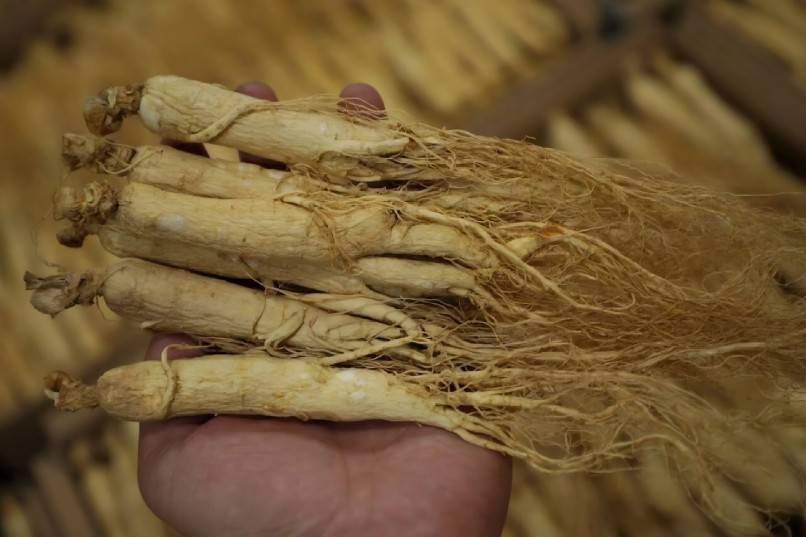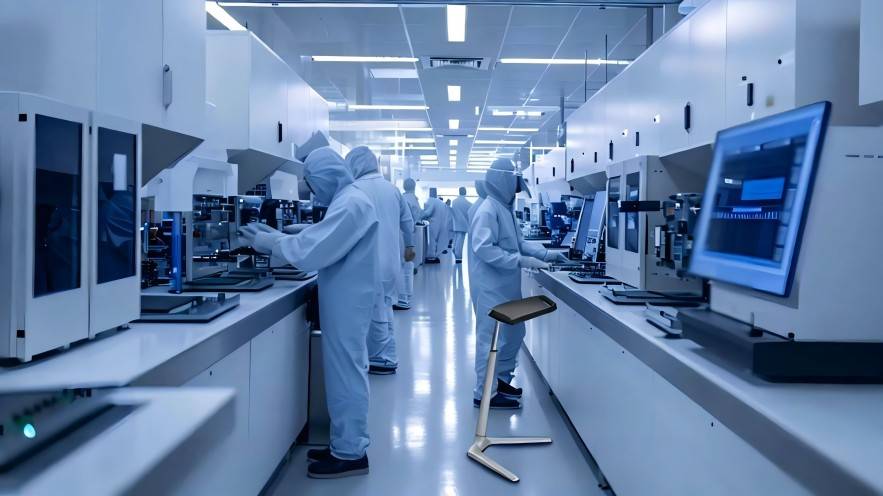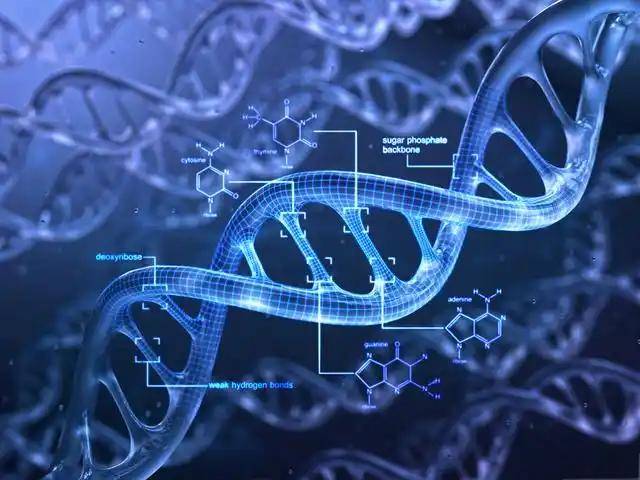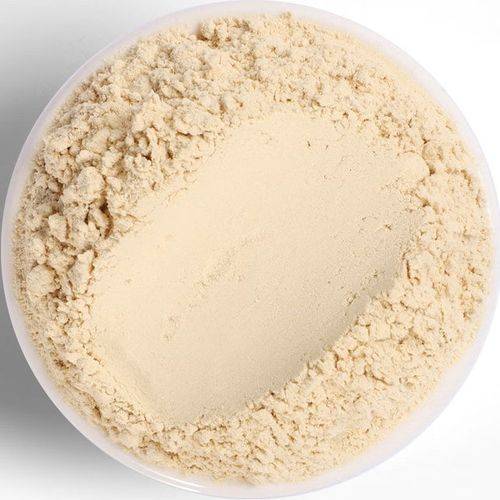Ginsenoside의 합성에 관한 연구
Ginseng (파낙 스 인삼C다. A. Mey), belonging to 이genus Panax 에서the family Araliaceae, is a well-known medicinal plant mainly distributed in northeastern China, Korea 그리고Japan. Ginseng contains various chemical components such as saponins, polysaccharides, polyacetylene and flavonoids. Among them, ginsenoside is a secondary metabolite 의ginseng and is its main bioactive component. It has a wide range 의physiological and pharmacological activities, including immune system regulation, anti-stress, hypoglycemic, anti-inflammatory, antioxidant and anti-cancer effects. Its mechanism 의action is mainly to mobilize the body's 내적요인, 신경보호기전, 면역기전을 동원하여 그 효과를 발휘하는데 독성이나 부작용이 거의 없다.
인삼은 현재 세계 '의 베스트셀러 전통 중국 의약품 및 전 세계에서 널리 사용됩니다.인삼 및 관련 제품의 전 세계 시장 소비량은 3억 5000만 달러 [1]에 달한 것으로 추정된다.그러나 인삼재배는 긴 재배시간 (성숙기까지 6~7년)과 붉은 피부병, 뿌리 썩음 [1] 등 심각한 식물병 때문에 매우 어렵다.따라서 연구자들은 인삼의 조직 및 세포배양을 통해 굳은살조직, 세포유지 등 정상적인 뿌리에서 뿌리형성을 유도하고, 이로 인해 진세노사이드 (ginsenoside) 가 생성되는 것을 연구해 왔다.그러나이 방법에 의한 ginsenosides의 생산 효율은 매우 낮다.따라서 대사공학은 진세노사이드 (ginsenoside)를 과잉 생산하는데 사용되며 [2-3], 이는 진세노사이드의 생산 효율을 높이기 위한 매력적인 전략이다.

ginsenosides의 개요 1
The main pharmacological active ingredient 인삼의is ginsenoside, 그것은 트리테르펜 사포닌입니다.Ginsenosides 이름은 RX (X = 0,겠어요, A-2, B-1, b-2, B-3, C, D, E, F, 20-O-F, G-1, G-2, H-1, ⅆ, X)에 따르면 아래에서 그들의 Rf 값의 주문 위로 TLC 플레이 트 [4]에 있다.진세노사이드 (Ginsenosides)는 당의 유도체로, 주로 설탕의 히드록실기가 설탕이 아닌 모이어티 (moiety)와 결합한 화합물이다.설탕을 넣지 않은 모이어티를 아글리콘 (aglycone) 이라고 부른다.진세노사이드 (Ginsenosides)는 아글리콘의 구조에 따라 두 그룹으로 나뉘는데, dammarane 형과 oleanane 형이다.담 마라네 타입이 주 타입이며, 기본 골격은 테트라 사이클이다.탄소수 3, 6 및 20의 당 그룹들 중 공비 또는 당고리에 부착될 수 있는 당군의 위치에 따라 진세노사이드는 프로토 진세놀 (protoginsenol)과 프로토 진세놀 (protoginsenol)로 더 구분될 수 있다.단 하나의 진세노사이드 (ginsenoside, Ro)는 올레아난산 (oleanolic acid)을 아글리콘 (aglycone)으로하고 펜타사이클의 기본 골격을 갖는 올레아난 형태의 진세노사이드 (ginsenoside)이다.
현재, 100개 이상의 ginsenoside로 구성되어 있음이 확인되었으며, 40개 이상의 ginsenoside 가 분리되었으며, 이들 대부분은 다마란 (damarane-type) 형으로 최근에 인삼 싹이나 가공인삼, 인삼 잎에서 분리한 새로운 ginsenosides 가 분리되었다.그 중 가장 널리 연구되고 주목할만한 진세노사이드는 Rb1, Rb2, Rc, Rd, Rg1, Rg2, Rg3, Re, Rf, Rh1, Rh2 [6]이다.새로 발견된 진세노사이드의 생물학적 활성은 아직 연구가 필요하다.
ginsenosides의 생합성 2
식물에는 MVA 경로와 2-C-methyl-D-erythritol-4-phosphate (MEP) 경로 등 두 가지 테르펜 생합성 경로가 있다.이전에는 일반적으로 진세노사이드를 mevalonate pathway (MVA pathway)를 통해 합성하여 IPP와 DMAPP을 합성하고, 2,3-oxokaurene을 추가로 hydroxylation과 glycosylation을 통해 변형하여 최종적으로 다양한 진세노사이드 단량체를 생성하는 것으로 알려져 있었다.최근 연구에 따르면 식물도 해당 중간체인 피루브산과 3-포스포글리세레이트를 전구체로 사용하여 효소작용을 통해 MEP를 생성할 수 있으며, 궁극적으로 IPP와 DMAPP.아이젠-바이치 등은 C13 동위원소 추적자를 이용해 항암 테르펜 파클리탁셀의 생합성 경로를 연구했고, 그 결과 파클리탁셀은 주로 MEP 경로를 통해 합성된다 [7].Ginsenosides도 terpenoids 이지만 인삼에 MEP 경로가 존재하는지에 대한 보고는 없다.
In plants, the MVA pathway is found to exist in the cytoplasm, while the MEP pathway is found in the plastids [8]. They are separated, but the reaction processes are carried out simultaneously. Although these two pathways exist in two different cellular spaces, they both generate IPP. Whether there is an exchange of IPP between the two pathways and the details of the exchange have always been one of the hot topics in the study of terpene metabolism in plants. Researchers have used inhibitors of key enzymes to inhibit the MVA and MEP pathways separately, confirming that the two pathways are largely independent of each other, while also finding that IPP exchange between the two pathways does occur [9-10]. Therefore, to some extent, the IPP synthesis of the two pathways has a compensatory function, which may also be one of the reasons why the MEP pathway in plants has not been discovered earlier. However, to date, there has been no research on the MEP pathway in ginseng. In addition, it remains to be studied whether both pathways or only one of them plays an important role in ginsenoside synthesis.

인삼에서 스테로이드와 트리테르페노이드의 생합성 경로는 동일한 전구체인 2,3-oxidosqualene을 공유하며, 2,3-oxidosqualene을 형성하고 분지하는 순환화의 단계는 두 경로에서 동일하다.인삼에서 피토스테롤과 트리테르페노이드의 합성은 OSCS (oxido스쿠알렌cyclase)에 의해 촉매된 2,3-oxidosqualene cyclization의 생성물로부터 시작된다.인삼에서, β-amyrin synthase (β 자는), dammarane synthase (DS)와 cycloartanol synthase (CS)에 속해 있 oxidosqualene cyclase (OSC) 가족과 분지에 위치 한 triterpenoid 지점 및 sterol biosynthesis(그림 1). 캐 스 catalyzes cycloartanol의 형성, 식물 sterols을 위한 전구체로 사용 될 수 있다.DS와 β 자는 모두 마련을 위한 ginsenosides, DS와 함께 제공하는 tetracyclic dammarane 해골의 합성을 위한 dammarane-type ginsenosides와 β 자는의 합성을 증대하는 해골 tetracyclic를 제공 oleanane-type ginsenosides다.그 intermediates dammarane와 β-boswellic 산성을 통해 ginsenosides으로 전환 될 수 있는 일련의 hydroxylation와 glycosylation 반응은 [13]다.Cytochrome P450은 진세노사이드 골격 (ginsenoside skeleton)의 hydroxylation에 관여하는 것으로 생각되며 [14], glycosyltransferases는 진세노사이드 골격 (ginsenoside skeleton)의 당화에 관여한다.
ginsenoside 생합성에 관여하는 효소를 암호화하는 유전자에 대한 Cloning 및 연구 3
Lee 등 15)은 인삼잎 cDNA 라이브러리의 EST 분석을 통하여 SS (PgSS1, accession number:AB115496)의 전장 cDNA clone을 분리하였다.PgSS1은 다중 복사 유전자 또는 여러 개의 인트론을 가진 유전자로 간주된다.PgSS1의 과발현은 PgSS1 효소의 활성을 증진시켜 식물 sterol과 ginsenoside 함량이 유의적으로 증가하였다.이러한 결과는 PgSS1이 phytosterol생합성뿐만 아니라 ginsenoside 생합성에서도 핵심적인 조절효소임을 나타낸다.이와 같은 결과는 형질전환된 Panax 인삼에서 phytosterols (β-sitosterol, stigmasterol)과 triterpene saponins의 수치가 2.0~2.5배 증가한 Panax 인삼 PgSS1 [16]의 이형과발현에서도 발견되었다.또한, 이는 다른 식물에서 인삼 triterpene saponin 생합성에 관여하는 유전자의 이형과발현이 ginsenoside 수치를 증가시키고 ginsenosides의 생합성 기전을 해명하는데 이용될 수 있음을 시사한다.
Kushiro et al. [12] 고립 된 두 개의 다른인 코딩 상동 cDNA 클론 β 자는 synthase (PNY1 및 PNY2)에서 인삼 뿌리 털다이 두 β-ASs 공통 조상이 있 을지 모 른 진화 동안 여러 복사 본을 통해 발전 했고 돌연변이이다.열쇠를 내부의 일부는 효소 형태 β-asarone (PNY1)이 결정 되었다.또한, PNY1의 site-directed mutation 연구를 통해 산물의 특이성에 중요한 단일 아미노산 잔기인 Tyr261을 확인하였다.β-Amyrin과 대사 물질은 종종 tissue-specific [17],의 유형을 하나만 왜 할 수 있는 oleanane-type 사포 닌 (Ro)는 인삼에서 확인 되었다.
Dammarane synthase (DS)는 ginsenosides의 가장 중요한 생합성 효소로 여겨진다.그것의 촉매 작용에 의해, 2,3-옥시도스쿠알렌은 (20R)-담마라인이 아니라 (20)-담마라인으로 전환된다.최근 연구자들은 RT-PCR 기술을 이용하여 dammarane-II synthase 유전자를 복제하였다 [18].이 DS는 770개의 아미노산의 폴리펩타이드를 암호화하는 2,310 bp ORF를 포함하고 있으며,이 폴리펩타이드의 예측 분자량은 88.3 kDa이다.또한 형질전환 인삼의 RNA 간섭 DS는 DS 발현을 잠재시켜 인삼 뿌리의 사포닌 생성을 84.5% 감소시킬 수 있다 [19].이러한 결과는 DS 가 ginsenoside 생합성에 관여하는 핵심 효소이며, 따라서 DS의 과발현은 ginsenoside 생합성을 현저히 향상시킬 수 있음을 나타낸다.
지금까지, 유일한 SS, DS, β 자는고 CS 연구 되었다.인삼에서 ginsenoside protopanaxatriol의 생성을 암호화하는 유전자 (가입번호 AB009031) 가 확인되어 [20] 인삼에서 새로운 식물 스테롤 합성 경로를 제시하고 있다.게다가, 표현의 결과 시퀀스 태그 (EST) 분석 cDNA 라이브러리의 다른 조직 으로부터의 인삼 [5, 14, 21]과 관련 된 다는 것을 보여주 후보 유전자 ginsenoside biosynthesis 같은 효소인 코딩 HMGR, FRS, geranylgeranyl diphosphate synthase, cytochrome P450, glycosyltransferase, β-glucosidase과 lupeol synthase (LUS)이다.
4 전망
Among the various chemical components of ginseng, ginsenosides are its main active ingredients. Currently, most studies have focused on the saponin components. Before the MEP pathway was discovered in bacteria and plants, the MVA pathway was considered the only synthetic route for the synthesis of triterpenoid saponins from IPP and DMAPP. The MEP pathway has now been shown to exist in a variety of plants; however, more research is needed on the MEP pathway in ginseng.
분자생물학과 효소학 기술이 효과적으로 사용되어 진세노사이드 생합성의 기전을 밝혀내고 있으며, 진세노사이드 생합성과 관련된 효소를 암호화하는 유전자와 후보 유전자들의 점점 더 완전한 cDNA 서열이 얻어지고 있다.또한, EST 기술은 ginsenoside 합성에 필요한 squalene synthase (HMGR, FPS, farnesyl diphosphate synthase, SE)와 이후 단계에서 필요한 효소 (cytochrome P450, glycosyltransferase, B-glucosidase)의 유전자 클로닝 및 발현을 위해 광범위하게 사용되고 있다.또한 인삼에서 lupeol과 lanosterol의 합성을 위한 후보 유전자를 발견함으로써 인삼의 대사 경로에 대한 이해를 증진시켰다.전통적으로 인삼 뿌리는 진세노사이드 생합성의 주요 조직으로 여겨져 왔다.그러나 대부분의 ginsenoside 생합성을 담당하는 DS는 인삼꽃봉오리에서 가장 높은 수준으로 발현된다 [19].이는 인삼꽃봉오리가 ginsenoside 생합성 경로를 추가적으로 해부하는데 이상적인 물질이 될 수 있음을 시사한다.
지금까지 진세노사이드 생합성에 관여하는 효소를 암호화하는 유전자를 규명하는 데 주로 사용된 방법은 RT-PCR [12-13]과 EST 분석 [5, 14, 21] 이었다.인삼 유전체 기반의 인삼 박테리아 인공 염색체 라이브러리가 구축됐다.이러한 자원은 ginsenosides와 관련된 유전자를 규명하는 것뿐만 아니라 유전자 발현의 조절기전을 해명하는 데에도 사용될 수 있다.최근 RNAi는 식물대사공학에서 매우 효과적인 기술수단으로 각광받고 있다.특정 유전자의 발현을 효과적으로 억제할 수 있으며 향후 인삼 대사 조절 및 기능성 검증에 관여하는 유전자 발굴을 위한 도구로 활용될 수 있다.RNAi 기술을 이용하면 진세노사이드 합성과 관련된 유전자를 대규모로, 고효율로 분석할 수 있으며, 가능한 대사조절 유전자를보다 효과적이고 정확하게 찾아내고 그 기능을 검증할 수 있다 [22].현재 진세노사이드 합성 경로를 밝히는 데 상당한 진전이 있었지만 관련 효소의 촉매 수준에 대한 연구는 아직 수행되지 않고 있다.또한, 진세노사이드 생합성의 후속 단계는 아직 명확히 밝혀져야 하며, 진세노사이드의 생합성을 분석하기 위해서는 아직 갈 길이 멀다.
인삼 사포닌은 2차 대사산물의 중요한 성분이며, 그 함량과 조성은 주로 생합성의 주요 효소와 세포에서의 발현 정도에 의해 결정된다.식물 스테롤과 트리테르페노이드의 대사는 여러 가지 요인에 의해 조절되는 매우 복잡하고 역동적인 과정이다.진세노사이드의 대사 경로가 완전히 밝혀지기까지는 아직 답해야 할 문제가 많다.그러나 인삼의 경제적, 약리학적 중요성을 고려할 때, 이것은 여전히 연구할 가치가 있는 중요한 분야이다.
참조:
HONG S G,LEE K H,KWAK J,et al.Diversity of yeasts associated with Panax 인삼 (J.한국미생물학회지,2006,44:674-679.
[2] Wu Qiong, Zhou Yingqun, Sun Chao 외.Ginsenoside 생합성 및 이차대사공학 [J.중국생물공학회지, 2009, 29(10):102-108.
[3]LIANG Y,ZHAO S.진세노사이드 생합성 (ginsenoside biosynthesis)에 대한 이해 (J.식물 생물학, 2008년, 10:415-421다.
[4]OKAZAKI H,TAZOE F,OKAZAKI S,et al.Increased 콜레스테롤 biosyn-thesis and hypercholesterolemia in mouse 과발현 squalene synthase in liver[J].한국지질학회지,2006,47:1950-1958.
[5]KIM M K,LEE B S,IN J G,et al. 비교분석 (지수 평 ressedse-quence tags) (est) of 인삼 잎 [J]이다.식물 셀 Rep,2006,25:599-606.
[6] 헬 름 스 S.암 예방 및 치료법:파낙스 인삼 [J.Alterna-tive Medicine Review,2004,9:259-274.
[7]EISENVAICH W,MENHARD B,HYLANDST P J,et al.Studies on the bi-osynthesis of taxol:the taxane carbon skeleton is not of mevalonoid origin [J]다.생화학, 1996년, 93:6431-6436.
[8] MEP 경로를 통한 식물엽록체에서의 SEEMANN M,TSE SUM BUI B,WOLFF M,et al.Isoprenoid 생합성:direct thylakoid/ferredoxinde-pendent photoreduction of GcpE/IspG[J].FEBS 편지,2006,580:1547- 1552.
[9] 헤멀린 A, 회플러 J F, 마이어 O 등 cytosolic mevalonate와 plastidial methylerythritol 인산염 경로 담배에서 밝은 노란색 2세포 [J].Journal of Biological Chemistry,2003,278:26666-26676.
[10]ROHDICH F,ZEPECK F,ADAM P,et al.The deoxyxylulose phosphate pathway of isoprenoid biosynthesis:IspG와 IspH 단백질에 의해 촉매되는 재-작용 기작에 관한 연구 (studies on the mechanisms of the re-actions by catalyzed by IspG and IspH protein)미국 Na-tional Academy of Sciences, 2003,100:1586-1591.
[11]KUSHIRO T,OHNO Y,SHIBUYA M,et al.의 in vitro conversion of 2, 3-oxidosqualene into dammarenediol by Panax 인삼 microsomes[J].Biological & Pharmaceutical Bulletin,1997,20:292-294.
[12] 쿠시로 T, 시부야 M, 에비즈카 Y.Beta-Amyrin synthase:고등식물 중에서 가장 인기 있는 triterpene의 형성을 촉매하는 oxidosqualene cyclase의 클로닝 (J.유로제이생켐,1998,256:238-244.
[13] KUSHIRO T, 시부야 M, EBIZUKA Y.분자 복제 of Panax 인삼의 ox-idosqualene cyclase cDNA:부호화하는 동위체 betaamyrin synthase다.향 해 자연 약 연구 in the 21 세기다 [J다]발췌 a Medica International 의회 시리즈, 1998년, 1157: 421-428다.
[14]JUNG J D,HAHM Y,HUR C G, 외. by ginsenoside 생합성을 위한 유전자 발견 분석 of ginseng exp ressed 순서 태그 [J].Plant 셀Rep,2003,22:224-230.
[15]LEE M H,JEONG J H,SEO J W,et. 등이 triterpene와 phytos-terol을 강화하였다 biosynthesis in Panax ginseng overexpressing squalene synthase 유전자 [J]이다.식물세포생리학,2004,45 (8) :976-984.
[16] 서제이 W, 정제이 H, 신 C G, 외. squalene syn-thase in의 과발현 Eleutherococcus senticosus 증가 phytosterol and triterpene 축적 되다 [J다]2005년 Phytochemistry, 66:869-877.
[17]PHILLIPS D R,RASBERY J M,BARTEL B,et al.Biosynthetic diversity 식물 트리테르펜 순환화 [J.Current Opinion in Plant Biology,2006, 9:305-314.
[18] 핍피몬탄 사쿨 M S, 쿠시로 테츠오, 에비즈카 유타카. Panax 인삼에서 ginsenoside bi-osynthesis를 위한 최초의 전용 효소인 Dammarenediol-II synthase.FEBS Letters,2006,580:5143-5149.
[19]HAN J Y,KWON Y S,YANG D C, 등의.expression과 RNA interfer-ence-induced silencing of the Panax 인삼의 dammarenediol synthase 유전자 (J.식물세포생리학,2006,47 (12):1653-1662.
[20]SUZUKI M,XIANG T,OHYAMA K,et al.Lanosterol synthase indicotyle-donous plants[J].Plant & Cell Physiology,2006,47:565-571.
[21]CHOI D W,JUNG J,HA Y I,et al.Analysis of transcripts in methyl jas manate-treated 인삼 털갈이뿌리)를 이용하여 ginsenoides 등의 생물-합성에 관여하는 유전자를 확인하였다 보조 대사 물질 [J]이다.식물 Cell 23, 2005년 담당자:557-566.
[22] 판시춘, 손민, 장레이 등.RNA 간섭과 약용식물의 대사공학에의 응용 [J.한약재, 2005, 36(9):1281-1284.


 영어
영어 프랑스
프랑스 스페인
스페인 러시아
러시아 한국
한국 일본
일본





